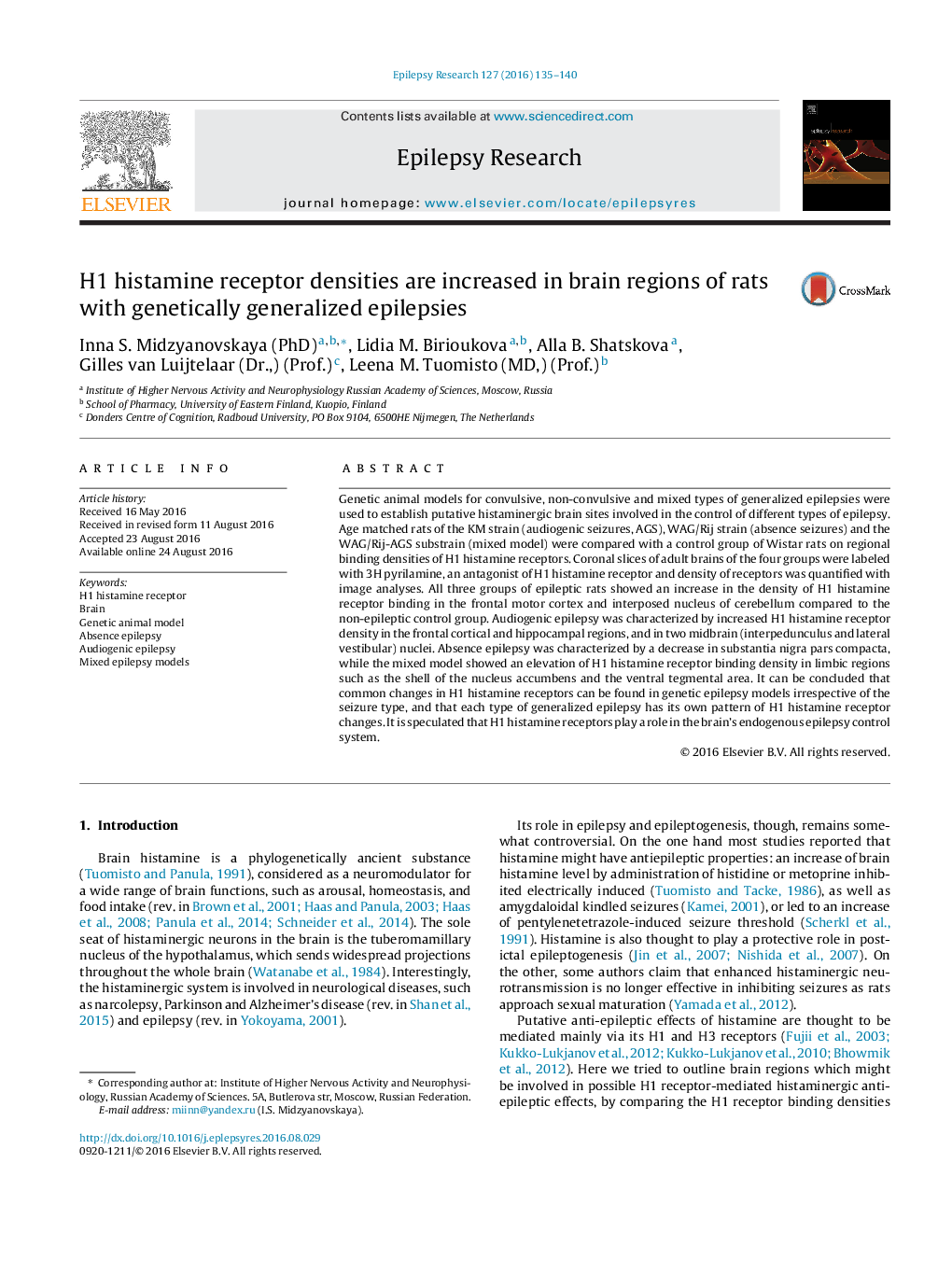| Article ID | Journal | Published Year | Pages | File Type |
|---|---|---|---|---|
| 6015022 | Epilepsy Research | 2016 | 6 Pages |
Abstract
Genetic animal models for convulsive, non-convulsive and mixed types of generalized epilepsies were used to establish putative histaminergic brain sites involved in the control of different types of epilepsy. Age matched rats of the KM strain (audiogenic seizures, AGS), WAG/Rij strain (absence seizures) and the WAG/Rij-AGS substrain (mixed model) were compared with a control group of Wistar rats on regional binding densities of H1 histamine receptors. Coronal slices of adult brains of the four groups were labeled with 3H pyrilamine, an antagonist of H1 histamine receptor and density of receptors was quantified with image analyses. All three groups of epileptic rats showed an increase in the density of H1 histamine receptor binding in the frontal motor cortex and interposed nucleus of cerebellum compared to the non-epileptic control group. Audiogenic epilepsy was characterized by increased H1 histamine receptor density in the frontal cortical and hippocampal regions, and in two midbrain (interpedunculus and lateral vestibular) nuclei. Absence epilepsy was characterized by a decrease in substantia nigra pars compacta, while the mixed model showed an elevation of H1 histamine receptor binding density in limbic regions such as the shell of the nucleus accumbens and the ventral tegmental area. It can be concluded that common changes in H1 histamine receptors can be found in genetic epilepsy models irrespective of the seizure type, and that each type of generalized epilepsy has its own pattern of H1 histamine receptor changes. It is speculated that H1 histamine receptors play a role in the brain's endogenous epilepsy control system.
Related Topics
Life Sciences
Neuroscience
Neurology
Authors
Inna S. PhD, Lidia M. Birioukova, Alla B. Shatskova, Gilles (Prof.), Leena M. (Prof.),
